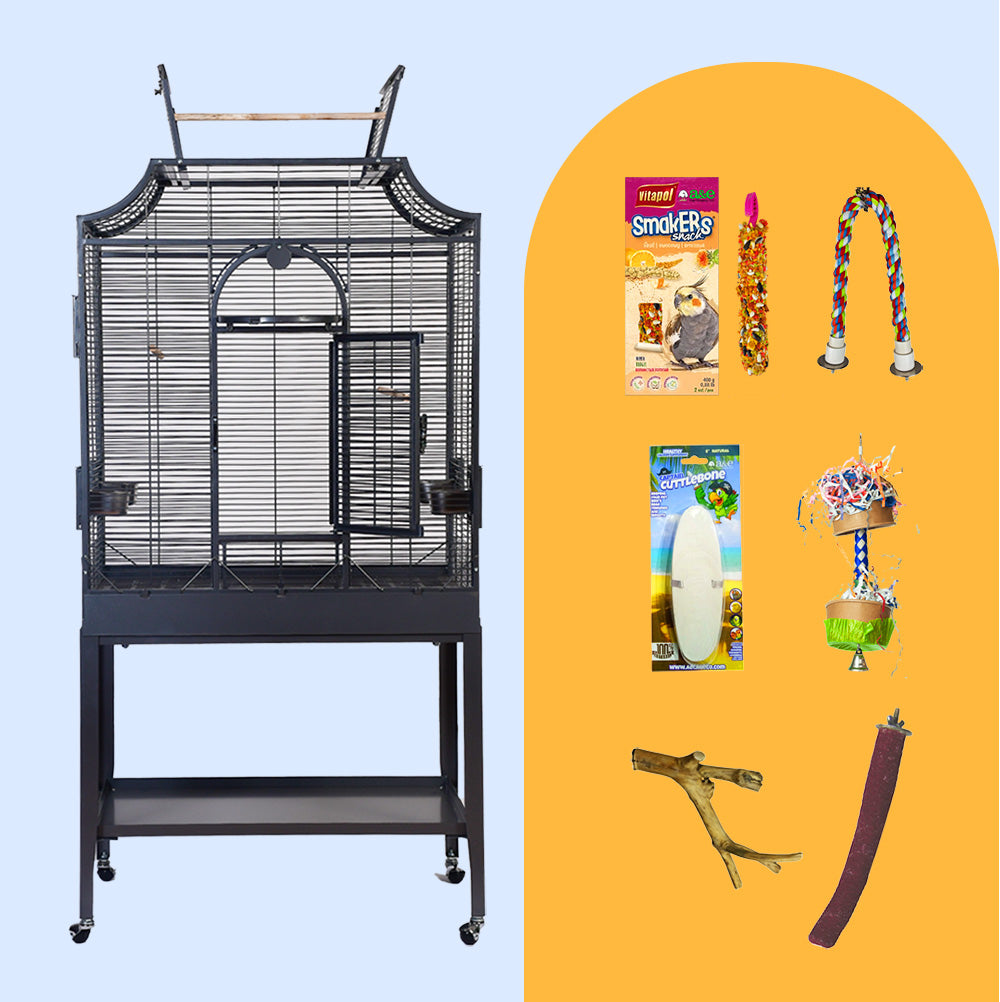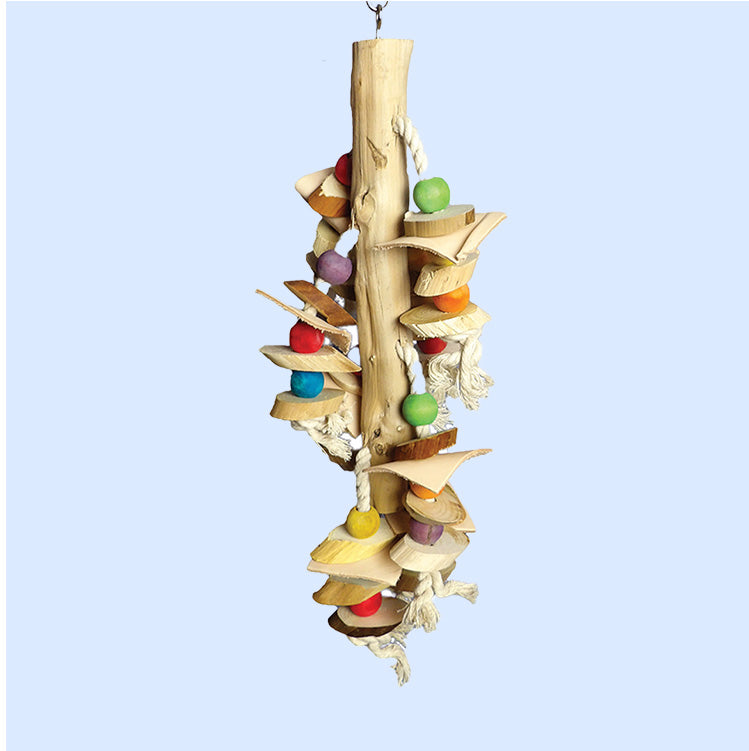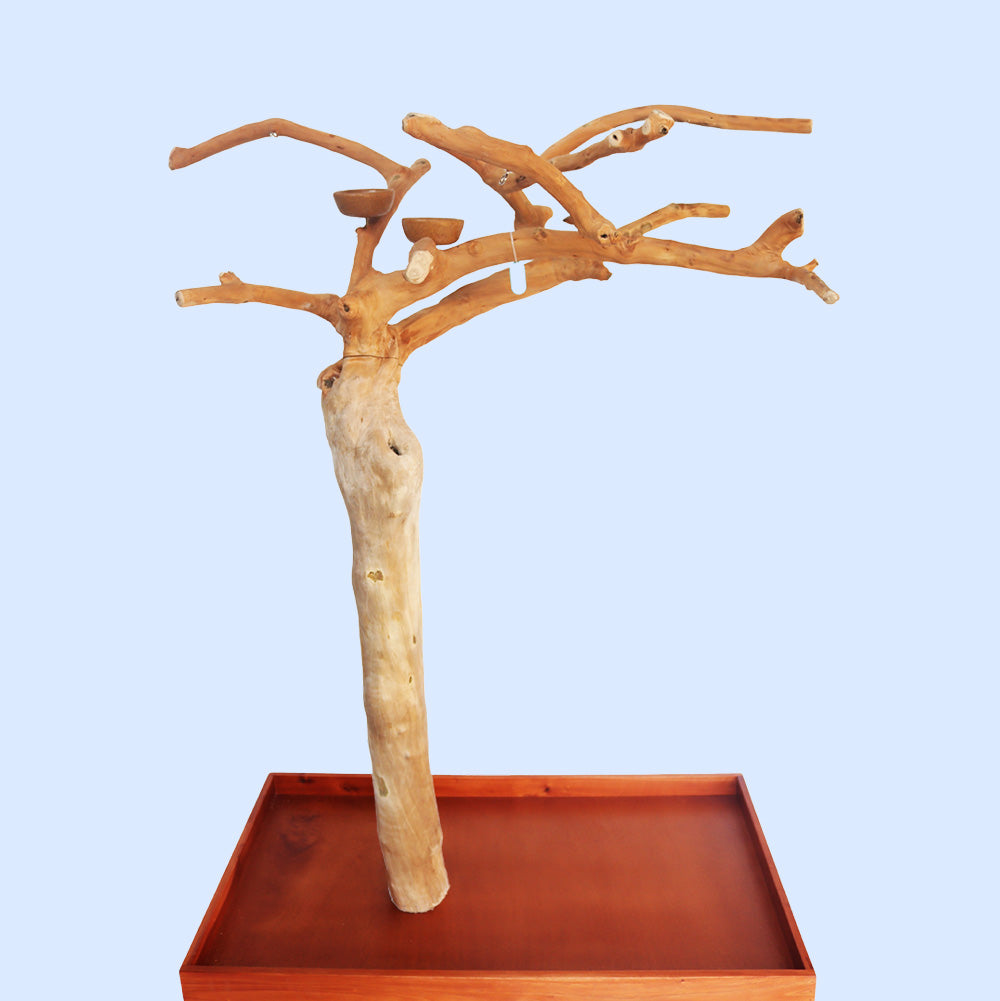How Strong Is a Parrot's Bite? Facts, Comparisons, and Tips for Owners

Parrots are beautiful, intelligent, and playful companions, but their powerful beaks are often underestimated. While these feathered friends can bring immense joy, a parrot bite can also be surprisingly strong and painful.
As parrot owners ourselves, we’ve had our share of "bite stories" with Gizmo and Bird, so we know firsthand how important it is to understand and manage this behavior. In this post, we’ll explore the incredible bite force of parrots, compare it to other animals, and provide practical tips—including how enrichment can make a huge difference—for parrot owners to address and mitigate biting behavior.
How Strong Is a Parrot’s Bite?
Parrots use their beaks for a variety of tasks, from cracking nuts to climbing and defending themselves. The bite force of a parrot is measured in pounds per square inch (psi), and it can be surprisingly powerful for their size.
-
Macaws: Large macaws, like the Hyacinth Macaw, have one of the strongest bite forces among parrots, estimated at 500-700 psi. This is enough to crack open hard nuts and even cause injuries to humans if provoked.
-
Cockatoos: Medium-sized parrots like cockatoos can exert a bite force of around 300-400 psi, which is still strong enough to cause significant discomfort or damage.
-
Smaller Parrots: Even smaller parrots like African Greys and Conures can have bite forces between 100-200 psi, making their bites anything but negligible.
As a real-life example, our African Grey, Gizmo, has given us a few "ouch" moments over the years. While he’s typically a sweetheart, he has bitten us when startled or overly excited. Bird, on the other hand, tends to be a bit moodier, especially during her hormonal phases, when she’s more likely to give us a warning nip if we don’t respect her boundaries.
Fun Experiment to Understand Parrot Bite Power
If you want a hands-on way to appreciate the strength of a parrot’s beak, try these simple experiments at home:
-
Crack a Walnut: Pick up a walnut and try to crack it open with your teeth. Most humans can’t even make a dent, but a large macaw can easily crush one. This showcases their incredible beak strength!
-
Break a Popsicle Stick: Snap a wooden popsicle stick with your fingers, then imagine a parrot using its beak to do the same effortlessly. It’s a good reminder of their power.
-
Chew on a Raw Almond: Try biting into a raw almond (carefully!) and see how hard it is to break. Parrots often crack open even tougher shells like it’s nothing.
These fun comparisons can help put their bite force into perspective and remind us to respect their beaks’ capabilities.
How Does Parrot Bite Power Compare to Other Animals?
To put parrot bite force into perspective, here are some comparisons with other animals:
-
Humans: The average human bite force is about 160 psi, which means large parrots like macaws can surpass this with ease.
-
Dogs: Domestic dogs vary by breed, with bite forces ranging from 230-700 psi (e.g., German Shepherds at the lower end and Mastiffs at the higher end).
-
Crocodiles: Crocodiles hold the record for the strongest bite, with forces exceeding 3,700 psi.
While parrots don’t match the bite force of apex predators, their beaks are perfectly adapted for their dietary and environmental needs, allowing them to exert immense pressure relative to their size.
Why Do Parrots Bite?
Parrots bite for various reasons, often as a form of communication or reaction to their environment. Understanding the underlying cause is the first step in addressing the behavior.
-
Fear or Stress: Parrots may bite when they feel threatened or cornered.
-
Territorial Behavior: Some parrots become protective of their cages, toys, or favorite people.
-
Hormonal Changes: During breeding season, parrots can become more aggressive and prone to biting. (Trust us, Bird’s mood swings during these times are no joke!)
-
Lack of Training: Young or untrained parrots might bite out of curiosity or frustration.
-
Overstimulation: Excessive petting or excitement can lead to biting as a way to signal discomfort.
How Enrichment Helps Reduce Biting
One of the most effective ways to reduce biting behavior is by ensuring your parrot has plenty of mental and physical stimulation. Bored parrots are more likely to become frustrated and act out, including biting. That’s why enrichment is a game-changer for both their happiness and yours.
Our Favorite Enrichment Products
-
Foraging Toys: Toys that encourage your parrot to work for treats are a fantastic way to keep their beaks busy. Gizmo loves puzzle feeders, and it’s so rewarding to watch him figure out how to access his favorite snacks.
-
Chew Toys: Parrots need to chew to maintain their beak health. Bird’s favorite is a colorful wooden toy that she can shred to her heart’s content.
-
Java Trees: A java tree is not just a perch; it’s a playground! Our parrots love climbing, exploring, and playing on theirs. Plus, it’s a beautiful addition to any bird-friendly space.
-
Interactive Toys: Toys with mirrors, bells, or moving parts can keep parrots engaged for hours. These are a hit with both Gizmo and Bird.
By rotating toys regularly and introducing new challenges, you can prevent boredom and help your parrot focus their energy on positive activities rather than biting.
How Can Parrot Owners Address Biting?
Biting can often be managed or even eliminated with patience, training, and a better understanding of your parrot’s behavior. Here are some effective strategies:
-
Identify Triggers: Observe what precedes a bite. Is it during cage cleaning, when introducing new toys, or during handling? Understanding the triggers can help you adjust your approach.
-
Avoid Reinforcing Biting: Never react with yelling or aggressive behavior, as this can reinforce biting. Instead, calmly and gently put the bird back in its cage or a neutral space to signal that biting leads to the end of interaction.
-
Train Positive Behaviors: Use positive reinforcement to encourage good behavior. Offer treats and praise when your parrot interacts without biting.
-
Respect Their Boundaries: Learn to recognize when your parrot is uncomfortable. Body language such as fluffed feathers, growling, or pinning eyes often signals a warning before a bite.
-
Seek Professional Help: If biting becomes a persistent issue, consult an avian behaviorist or veterinarian to rule out any underlying medical or psychological concerns.
Parrot Safety Tip for Owners
Always handle your parrot with care and avoid putting yourself in situations where a bite is likely, such as reaching into their cage unexpectedly. Using training perches or gloves can also help minimize injury during training.
Conclusion
Parrots’ powerful beaks are a testament to their remarkable adaptation and intelligence, but biting behavior can be a challenge for owners. As we’ve learned through experiences with Gizmo and Bird, patience and understanding are key. Enrichment is a cornerstone of reducing frustration and building trust—and it’s a win-win because it keeps your parrot happy and engaged.
Check out our hand-picked enrichment products at Squawk Shop and give your feathered friend the stimulation they need to thrive. Have biting stories or tips to share? We’d love to hear them in the comments below!



Leave a comment